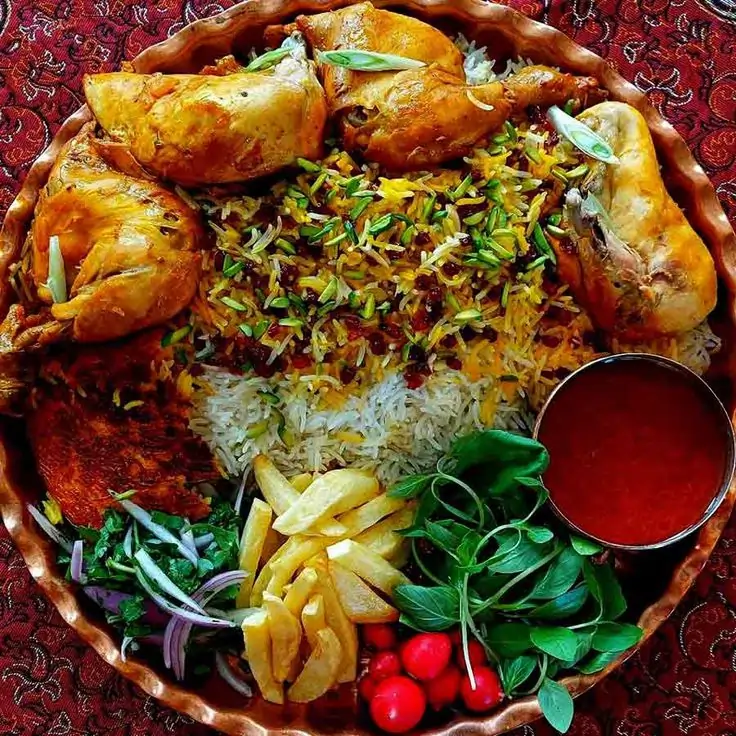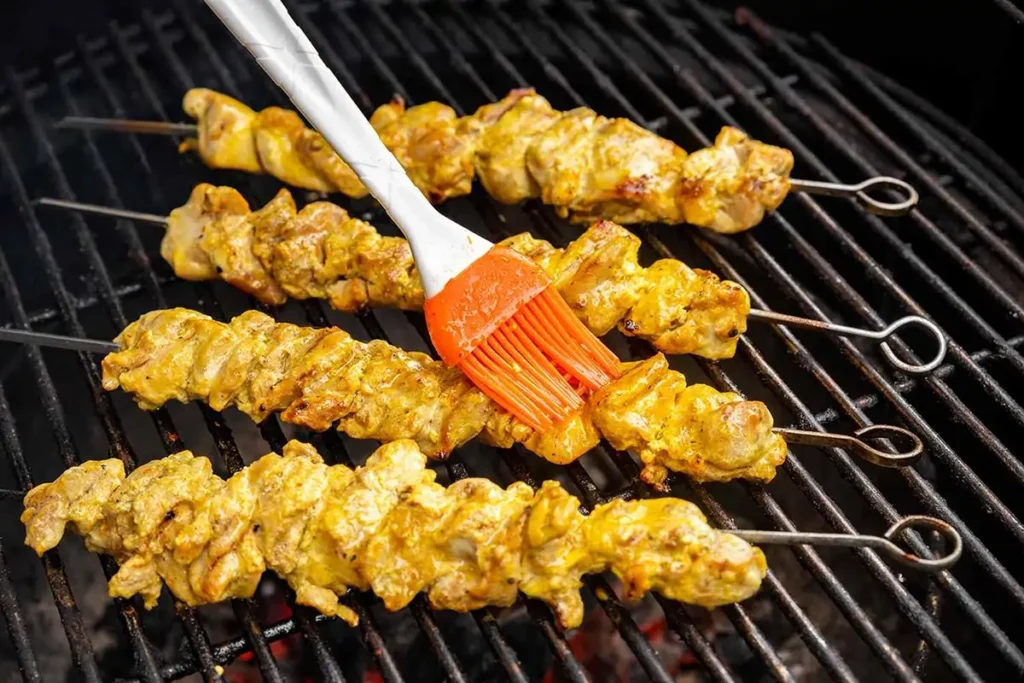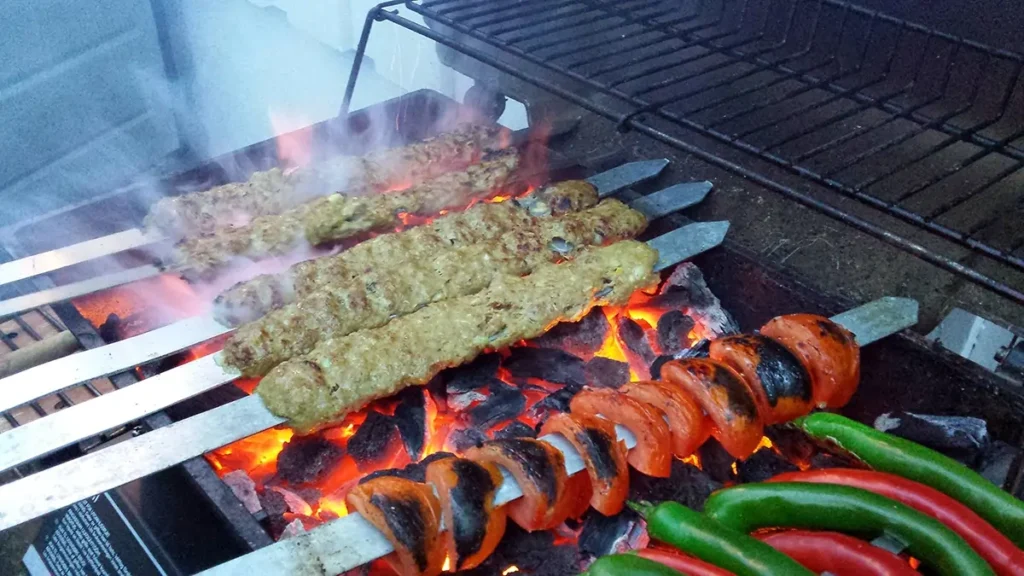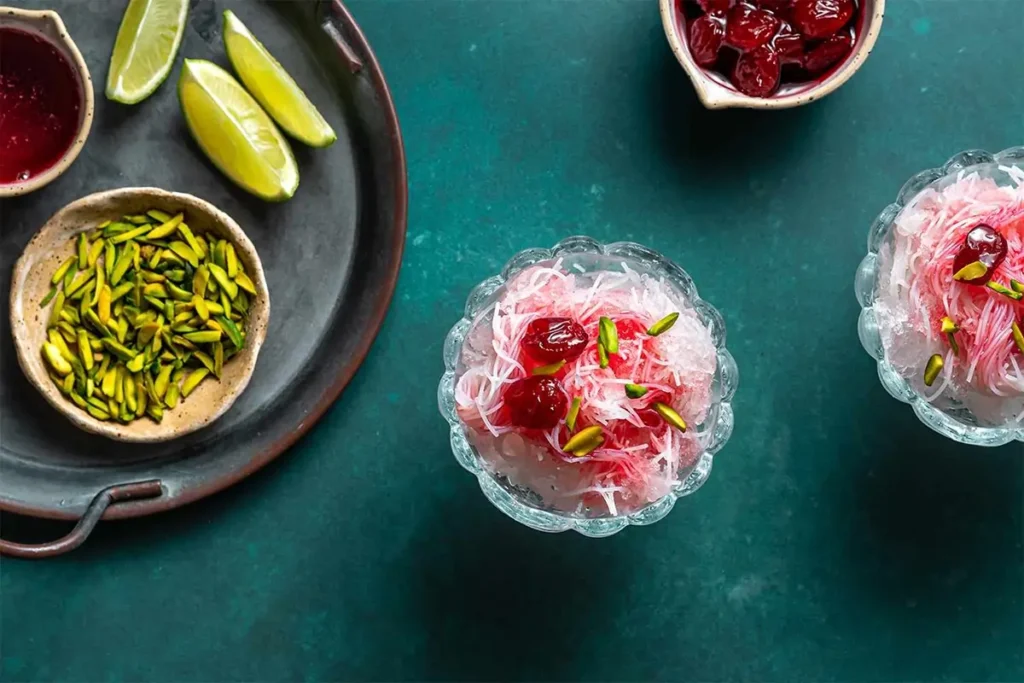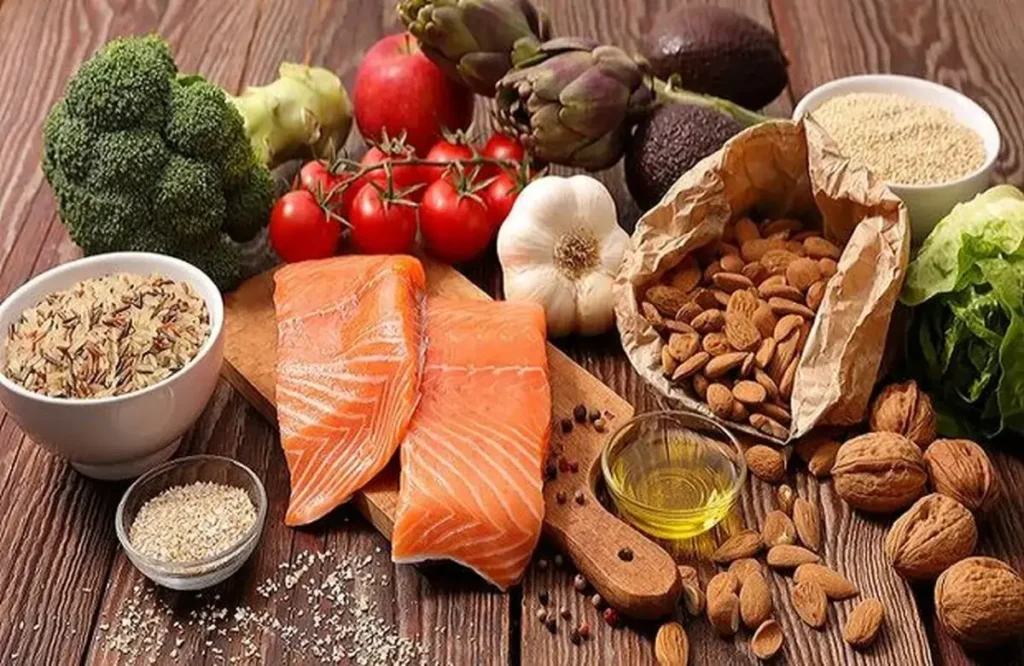
The MIND Diet and Its Connection to Persian Cuisine
The MIND diet is a brain-healthy eating plan that combines elements of the Mediterranean and DASH diets, emphasizing leafy greens, berries, nuts, whole grains, beans, fish, and olive oil to help reduce the risk of Alzheimer’s and support cognitive function.
What’s particularly fascinating is how well many of the core principles align with aspects of Persian culture, especially when we consider the importance of fresh ingredients and traditional cooking methods. It is also worth noting the role that flavonoid diet can have to the health in overall as well as the brain.
You don’t need to give up the colorful, flavorful traditions of Persian culture to embrace better brain health. The acclaimed MIND diet was designed to protect memory and reduce the risk of Alzheimer’s, and—surprisingly—shares much in common with classic Persian popular dishes. By blending modern nutrition science with time-honored Iranian meals, you get the best of both worlds: rich flavor, cultural roots, and improved wellness!
What is Mediterranean Diet
The Mediterranean diet is one of the two pillars of the MIND diet. Renowned for its emphasis on vegetables, fresh herbs, fruits, olive oil, whole grains, nuts, fish, and poultry, this way of eating is considered a true flavonoid diet, rich in antioxidants and anti-inflammatory nutrients.
Many beloved Persian popular dishes such as Salad Shirazi, Ghormeh Sabzi, and Ash Reshteh naturally fit Mediterranean principles.
Key Mediterranean Diet Features:
- Includes lots of vegetables and fresh herbs
- Focuses on heart-healthy fats (olive oil, nuts)
- Promotes fish and poultry over red meat
- Uses whole grains as a staple (like sangak bread)
What is DASH (Dietary Approaches to Stop Hypertension)
The DASH diet, developed to lower blood pressure, is the second building block of the MIND diet. It centers around
- Eating more fruits, vegetables, beans, and whole grains
- Cutting back on sodium
- Favoring low-fat dairy, and
- Limiting red meat and sweets
In many ways, classic Persian culture is already DASH-friendly—herbs and spices add flavor instead of salt, and dishes like Adasi (lentil stew) and Khoresh Bamieh (okra stew) highlight vegetables and legumes.
Benefits of the MIND Diet
The MIND diet blends the best features of Mediterranean and DASH plans, with clear benefits for long-term health—particularly for the brain. Studies show people who closely follow the MIND diet can cut their Alzheimer’s risk by over 50%. That’s thanks to all the antioxidant- and flavonoid-rich foods at its core.
Major Benefits:
- May dramatically lower chances of Alzheimer’s or dementia
- Supports memory, focus, and cognitive function
- Improves heart health
- Reduces inflammation
- Easily adaptable for lovers of Persian popular dishes
MIND Diet Benefits & Persian Cuisine Examples
|
MIND Diet Benefit |
Persian Dish Example |
Key Ingredient (Flavonoid) |
|
Antioxidant-rich |
Ghormeh Sabzi |
Parsley, fenugreek, beans |
|
Heart-healthy fats |
Fesenjan |
Walnuts (in stew) |
|
Lots of vegetables |
Salad Shirazi |
Tomato, cucumber, herbs |
|
Focus on legumes |
Ash Reshteh, Adasi |
Beans, lentils, herbs |
|
Lower in red meat |
Chicken or fish kebabs |
Poultry, fish |
What Are the Components of the MIND Diet?
The MIND diet is built on foods proven to fight aging and protect the mind. Many of these foods already appear in the most popular Persian dishes and snacks.
Core Components:
- Leafy Greens & Fresh Herbs: Spinach, parsley, sabzi khordan
- Other Vegetables: Eggplant, squash, carrots
- Berries: Strawberries, mulberries, barberries (used in Zereshk Polo)
- Nuts: Walnuts, almonds, pistachios
- Beans: Red beans, lentils, chickpeas
- Whole Grains: Brown rice, sangak/barbari bread
- Fish & Poultry: Fish or chicken (not red meat)
- Olive Oil: For cooking and salads
In Persian culture, many meals naturally feature lots of herbs, beans, nuts, and whole grains—essential for a true flavonoid diet.
5 Foods to Avoid on the MIND Diet
While many Persian favorites boost brain health, some should be limited.
Avoid or Limit:
- Red meat: (kebab or lamb stews—eat rarely)
- Butter & Margarine: (swap for olive oil)
- Full-fat cheese & dairy: (use modestly in stews and Persian desserts)
- Pastries & Sweets: (traditional Persian desserts like baklava and zoolbia-bamieh should be special-occasion treats)
- Fried foods: (choose baked or grilled alternatives)
Many delicious flavors in Persian cuisine come from herbs, spice, and citrus instead of less healthy fats or sugars. Updating recipes by adding nuts, berries, or switching to olive oil allows you to keep cultural traditions while enjoying the benefits of a flavonoid diet.
Would you like a list of specific Persian recipes adapted for the MIND (flavonoid-rich) diet, or more tips for everyday swaps?
Key Foods in the MIND Diet and Their Flavonoid Benefits
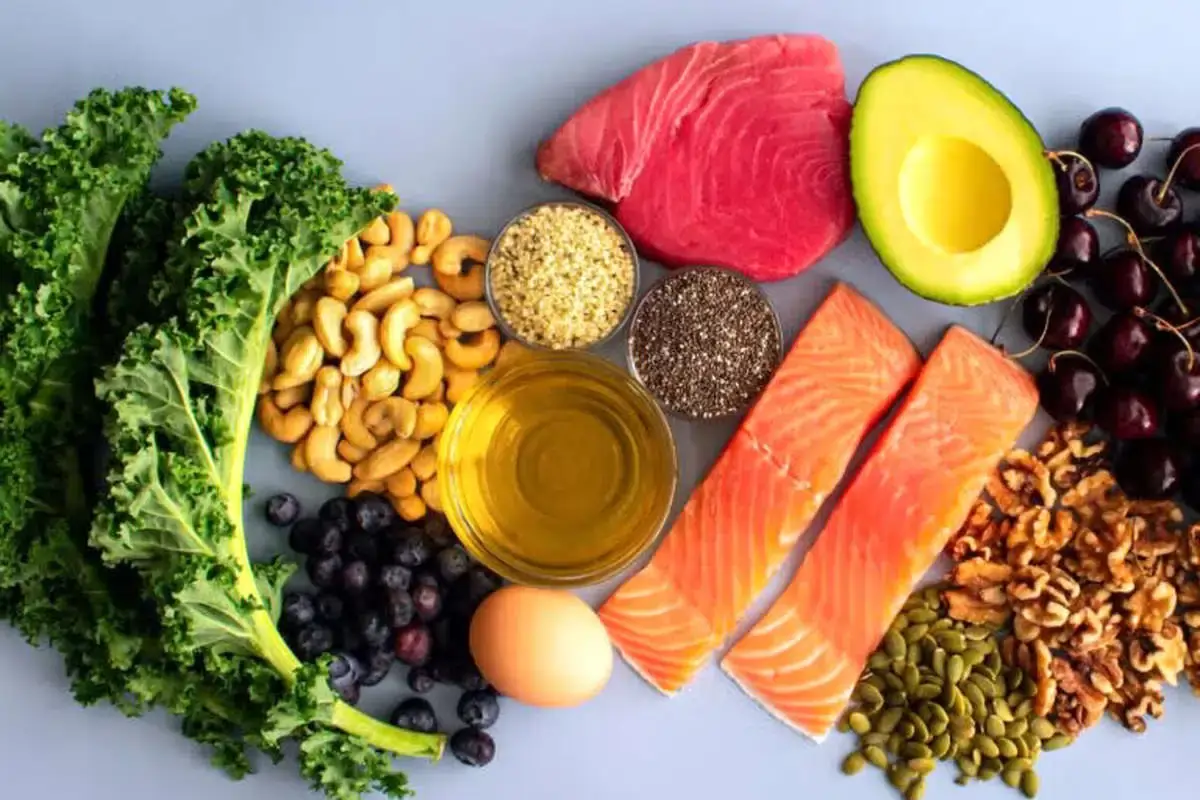
The MIND diet encourages a diet rich in specific foods, and many of these foods are also good sources of flavonoids, which are known for their antioxidant and anti-inflammatory properties. Here’s a breakdown:
- The MIND diet’s focus on whole foods provides natural sources of essential nutrients and beneficial compounds like flavonoids. Consuming a variety of these foods can contribute to overall health and cognitive well-being.
- Key Components:
- Leafy Greens: Spinach, kale, lettuce
- Vegetables: Broccoli, carrots, bell peppers
- Nuts: Almonds, walnuts, pistachios
- Berries: Strawberries, blueberries, raspberries
- Beans: Kidney beans, chickpeas, lentils
- Whole Grains: Brown rice, quinoa, oats
- Fish: Salmon, tuna, trout
- Olive Oil: Extra virgin olive oil
Similarities Between the MIND Diet and Persian Popular Dishes
Many Persian popular dishes naturally align with the MIND diet’s principles. Here’s how some of the most beloved Iranian foods complement this brain-healthy eating pattern:
- Explanation: Traditional Persian cuisine often emphasizes fresh, whole ingredients, which is in line with the MIND diet’s focus. By understanding these connections, it’s easier to adapt Persian cuisine to further enhance its cognitive benefits.
- Examples:
|
Persian Popular Dish |
MIND Diet Alignment |
|
Ghormeh Sabzi |
Rich in leafy greens and herbs |
|
Ash Reshteh |
High in legumes and vegetables |
|
Zereshk Polo ba Morgh |
Poultry instead of red meat |
|
Salad Shirazi |
Fresh vegetables and herbs, olive oil dressing |
|
Adasi (Lentil Soup) |
Excellent source of legumes, spices and vegetables |
Adapting Persian Culture for a Flavonoid Diet
Embracing a flavonoid diet within the framework of Persian culture can be both delicious and beneficial. It involves making thoughtful choices that emphasize flavonoid-rich ingredients:
- Explanation: By focusing on foods naturally high in flavonoids, you can maximize the potential cognitive and overall health benefits of your diet while celebrating Persian culture through its culinary traditions.
- Practical Steps:
- Increase Herb Usage: Use more parsley, cilantro, and mint in salads and dishes.
- Eat Colorful Fruits and Vegetables: Add bell peppers, tomatoes, and berries to your meals.
- Use Olive Oil: Use extra virgin olive oil as the primary cooking oil for its antioxidant benefits.
- Snack Smart: Choose nuts and seeds as healthy snacks.
Ghormeh Sabzi: A MIND Diet-Friendly Persian Staple
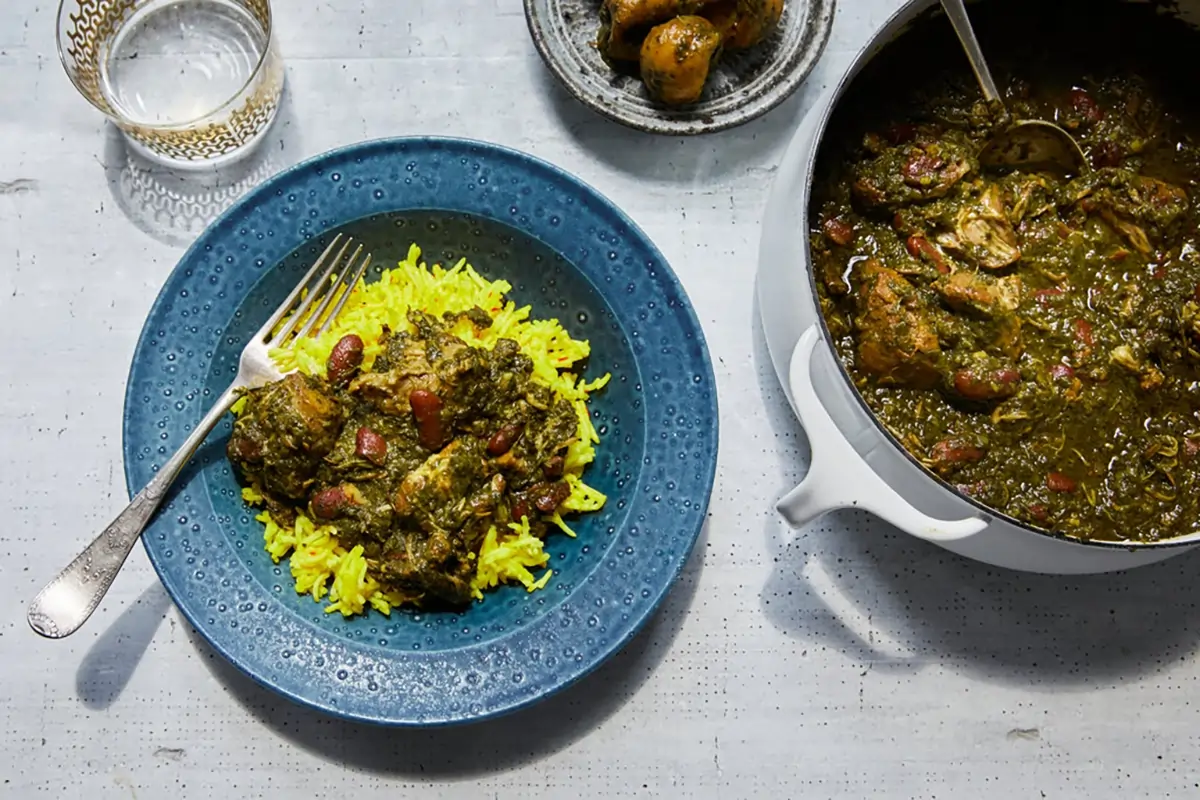
Ghormeh Sabzi, a beloved Persian herb stew, is naturally aligned with the MIND diet:
- Explanation: Ghormeh Sabzi features a wide variety of flavonoid-rich herbs and vegetables, making it a powerhouse of nutrition. Its combination of greens, beans, and lean meat (or vegetarian alternatives) makes it an ideal dish for brain health.
- Key Ingredients & Benefits:
- Parsley: High in vitamins and antioxidants
- Spinach: Rich in iron and folate
- Kidney Beans: Good source of protein and fiber
- Fenugreek: Adds unique flavor and has anti-inflammatory properties
Balancing Persian Desserts with the MIND Diet
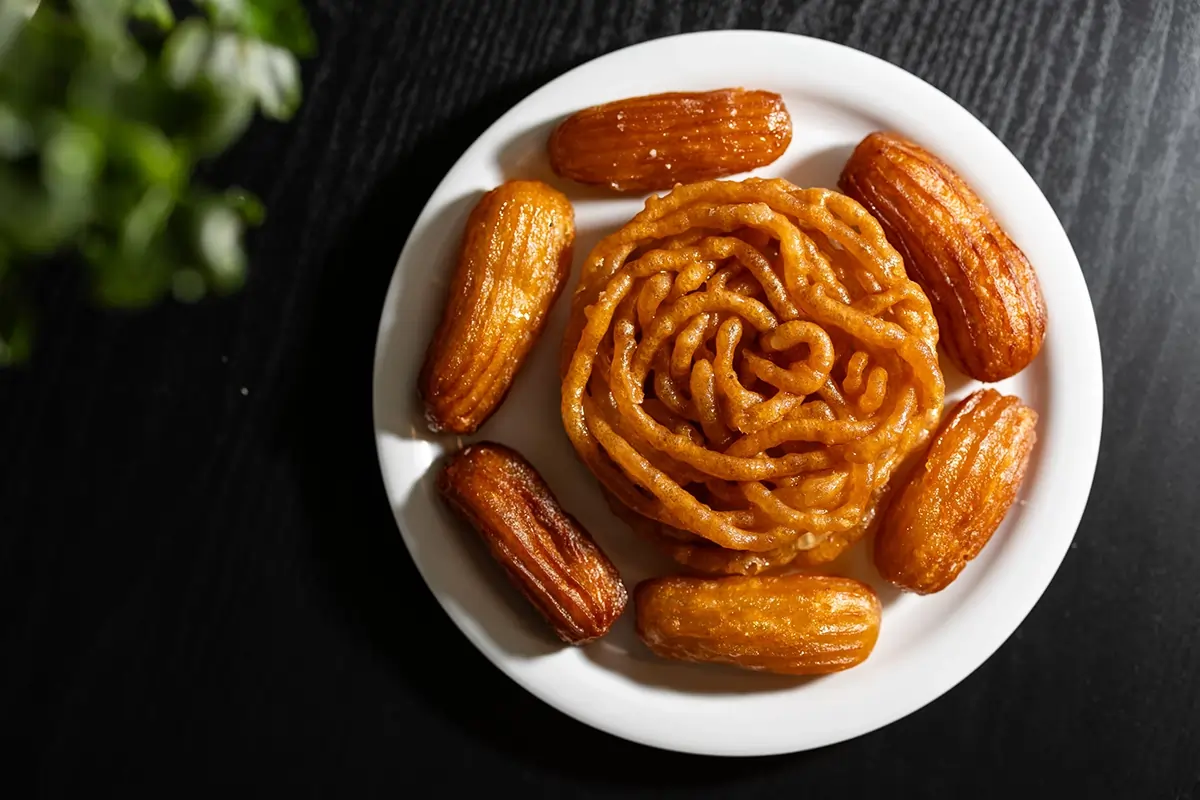
While traditional Persian desserts like Baklava and Sholeh Zard are delightful, they are often high in sugar. Here’s how you can balance indulging in these treats while sticking to the MIND diet:
- Explanation: Moderation is key when enjoying traditional Persian desserts. You can still enjoy them occasionally while making conscious choices to balance your overall diet with MIND-friendly options.
- Strategies:
- Portion Control: Enjoy small portions of desserts.
- Frequency: Limit dessert consumption to special occasions.
- Healthy Swaps: Choose desserts with nuts and fruits, such as fresh fruit platters or a small serving of Fesenjan (walnut stew).
- Mindful Eating: Savor each bite of the dessert to feel more satisfied with less.
FAQs
Can I enjoy Persian cuisine while following the MIND diet?
Yes! By making mindful choices, such as increasing vegetables, limiting red meat, and moderating sugary desserts, you can align Persian cuisine with the MIND diet’s principles.
Which Persian dishes are most suitable for the MIND diet?
Dishes like Ghormeh Sabzi, Ash Reshteh, Salad Shirazi, and Adasi (lentil soup) are excellent choices due to their high vegetable and legume content.
How can I adapt Persian desserts to fit the MIND diet?
Practice portion control, limit frequency, and opt for desserts that include nuts and fruits.
How does a flavonoid diet contribute to brain health?
Flavonoids have antioxidant and anti-inflammatory properties that protect brain cells and improve cognitive function.
How does this version look to you? I can make further adjustments as needed.

